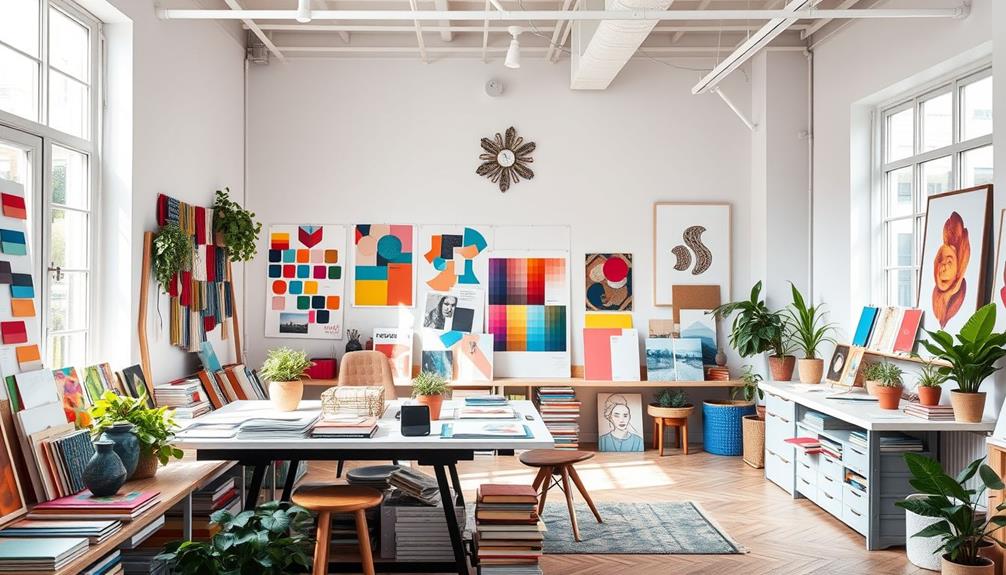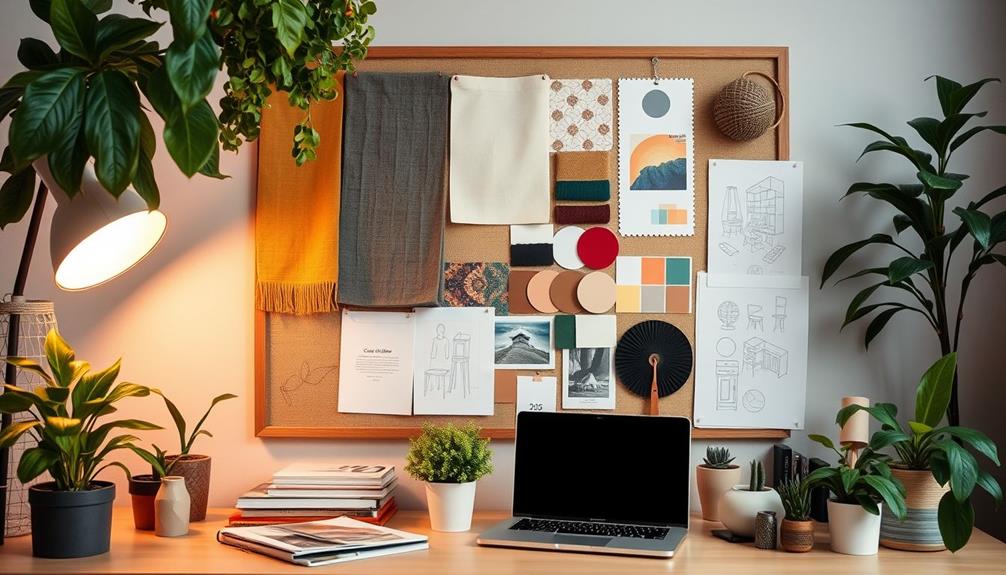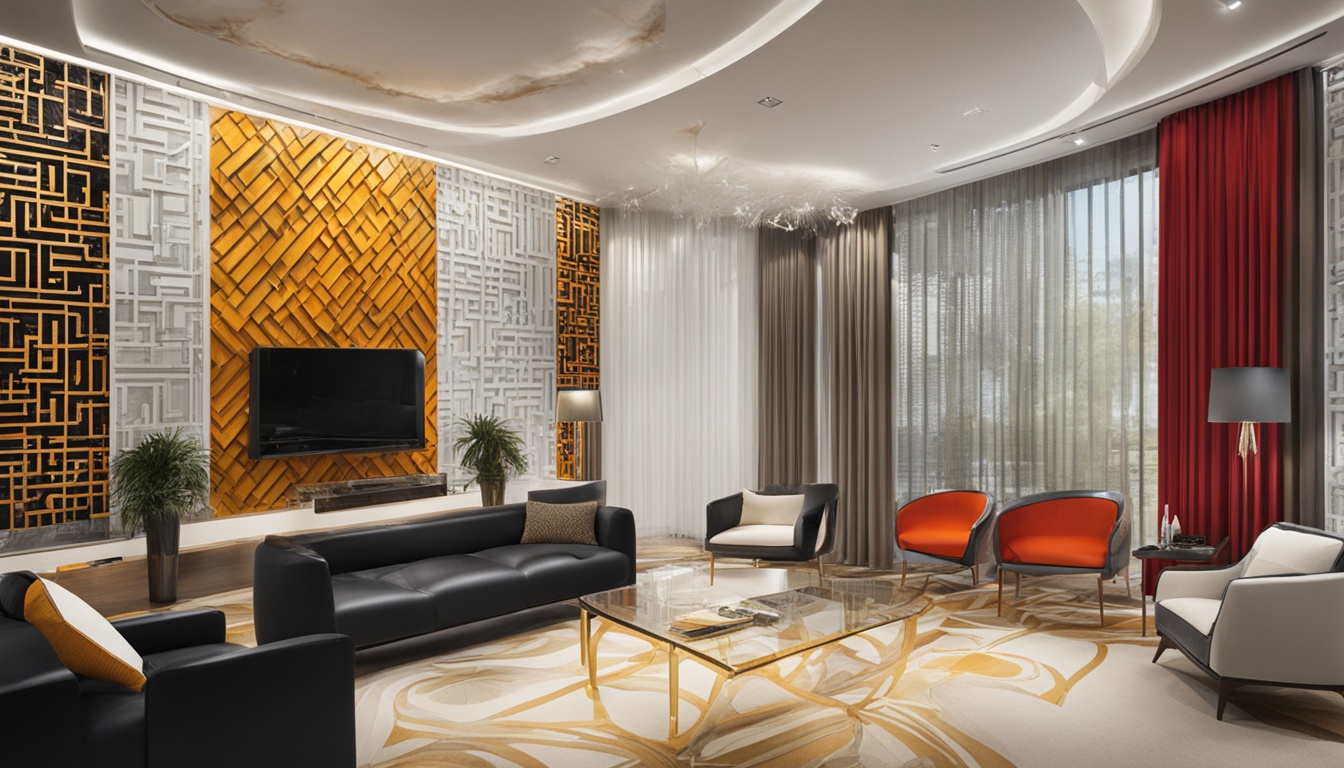To improve your interior design skills, start by mastering key design principles like balance and harmony. Enhance your design eye by studying color theory and analyzing successful designs. Gain practical experience through independent projects or volunteering in your community. Stay updated on trends by following influential designers and attending industry events. Don't forget to utilize technology—tools like AutoCAD and mobile apps can streamline your workflow. Finally, engage with fellow designers for networking and professional development. There's always more to discover that can sharpen your skills and broaden your perspective on design. For additional interior design tips, consider seeking out mentorship or joining professional organizations in the field. Collaborating with experienced designers can provide invaluable insights and guidance. Additionally, don’t underestimate the power of seeking inspiration from various sources such as nature, art, and architecture. These diverse influences can help spark new ideas and enhance your creativity in interior design.
Key Takeaways
- Study key design principles like balance, harmony, and proportion to create visually appealing spaces.
- Engage in independent projects and volunteering to apply theoretical knowledge in real-world scenarios.
- Utilize design software and mobile apps to enhance technical skills and visualize layouts effectively.
- Stay updated on industry trends through publications, social media, and design shows for inspiration.
- Network with professionals and join organizations to gain insights and foster collaborative opportunities.
Understanding Key Design Principles

Understanding key design principles is vital for anyone looking to enhance their interior design skills. By mastering these principles, you can create spaces that aren't only functional but also visually appealing.
Start with balance, which guarantees that every element in the room contributes to a sense of stability. Use harmony to create a cohesive look, incorporating complementary color palettes and materials. Consider how modern farmhouse bedroom aesthetics can inspire your choice of textiles and colors.
Proportion and scale are significant in space planning; they dictate how furniture and decor fit within the overall size of the room. Pay attention to rhythm, which involves using patterns, colors, and textures to create movement, allowing the eye to flow naturally throughout the space.
Don't forget about emphasizing focal points. This draws attention to specific areas or elements, enhancing the overall aesthetic and guiding the viewer's experience.
Finally, familiarize yourself with the seven key elements of design—color, pattern, light, texture, space, form, and line. Mastering these elements will provide you with invaluable interior design tips, enabling you to transform any space into a harmonious, inviting environment.
Start applying these principles, and watch your design skills flourish.
Enhancing Your Design Eye
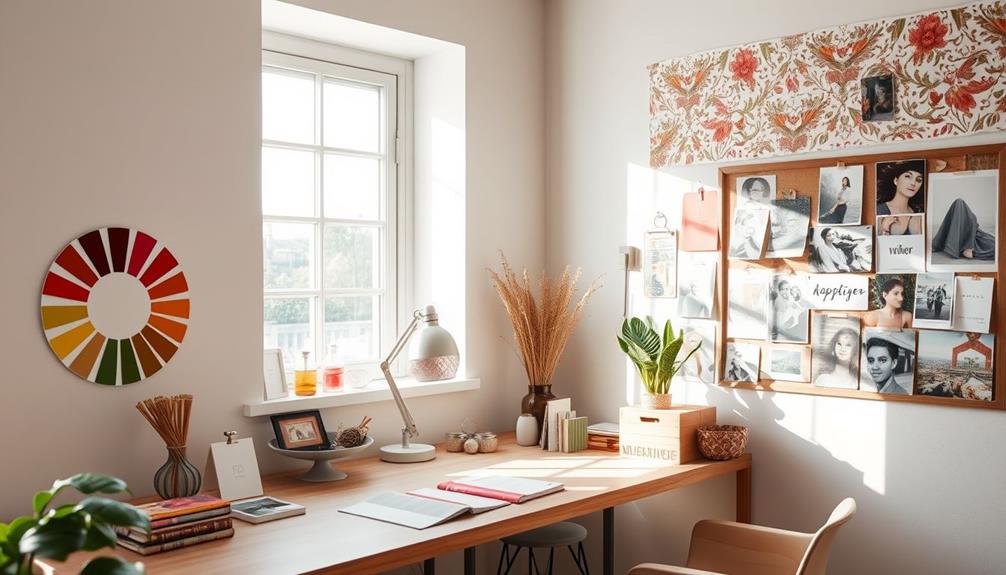
To truly elevate your interior design capabilities, enhancing your design eye is key. Start by practicing color theory; understanding how different palettes interact will help you influence the mood of a space. Analyze successful designs through online platforms and magazines to identify effective focal points and balance.
Experiment with spatial relationships by sketching layouts or using design software, sharpening your understanding of proportion and flow in interiors. Creating mood boards is another crucial tool; they visually consolidate your ideas, allowing you to assess how different elements work together cohesively.
Here's a simple table to visualize these concepts:
| Practice Area | Key Focus | Benefits |
|---|---|---|
| Color Theory | Palette interaction | Harmonious designs |
| Analyzing Designs | Focal points & balance | Improved design identification |
| Spatial Relationships | Proportion & flow | Enhanced layout understanding |
| Mood Boards | Visual consolidation | Cohesive design assessment |
| Self-Reflection | Design decisions | Refined aesthetic preferences |
Practical Experience and Applications
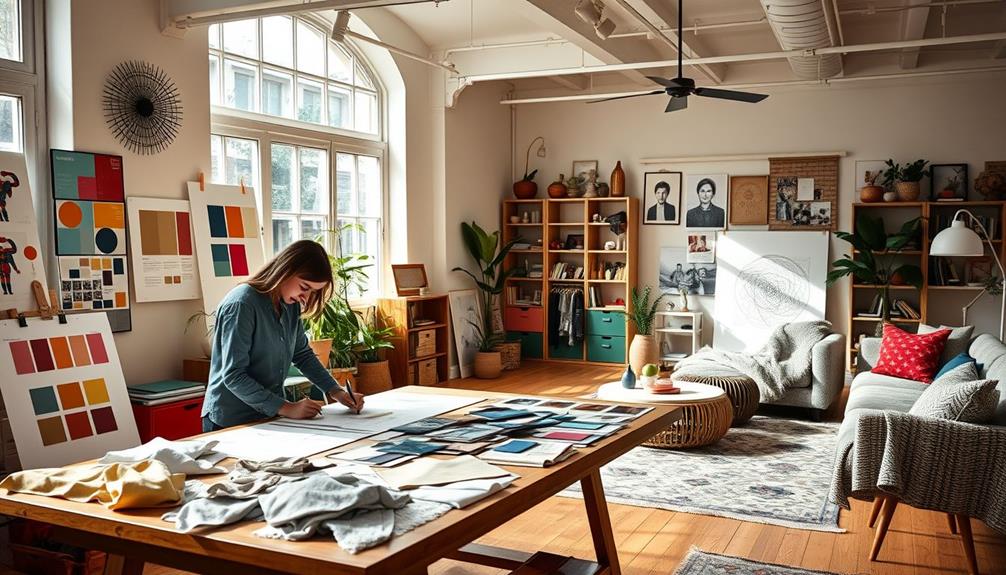
Gaining practical experience is essential for honing your interior design skills and bridging the gap between theory and application. To kickstart your journey, consider undertaking independent design projects or internships. These opportunities allow you to apply your theoretical knowledge in real-world scenarios, enhancing your understanding of the field.
Volunteering for redesign projects in personal or community spaces can also help you build a diverse portfolio, showcasing different design styles and solutions.
Keep your portfolio updated with unique design projects, sketches, and accomplishments. This documentation serves as a demonstration of your evolving skills, making it easier to impress potential clients or employers.
Participating in design competitions is another excellent way to challenge your creativity and receive constructive feedback from industry professionals.
Moreover, engage in collaborative projects with peers or industry experts. This teamwork broadens your understanding of various design approaches and techniques, while also improving your communication skills.
Staying Updated on Trends
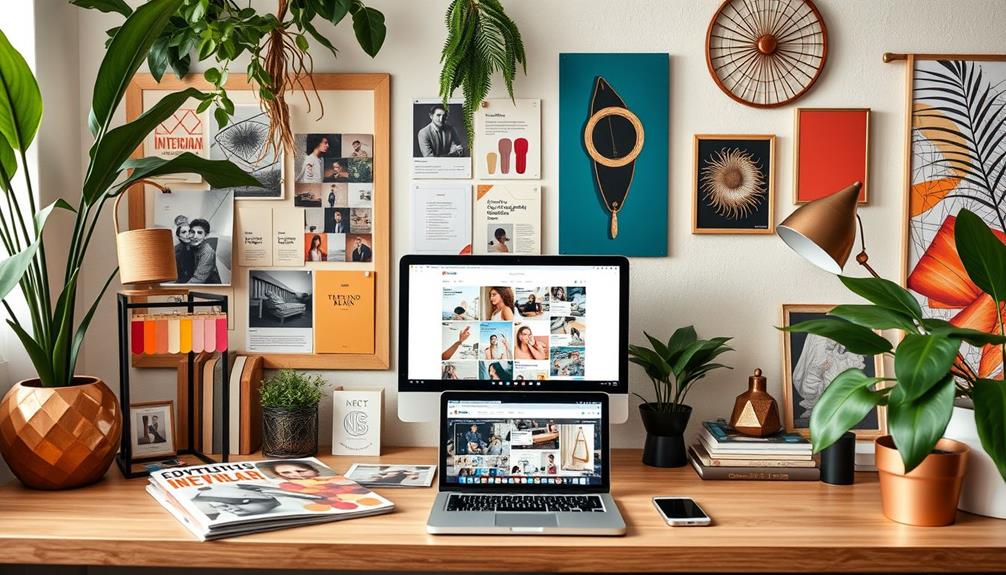
As you continue to build your interior design skills through practical experience, staying updated on current trends is vital for creating relevant and appealing spaces. To keep your design career on the cutting edge, regularly read industry publications like Architectural Digest. Following influential designers on Instagram and Pinterest for a daily dose of inspiration that can spark creativity in your projects is essential.
Additionally, exploring unique water-based activities can inspire innovative design concepts that incorporate natural elements into your work.
Attending design shows and exhibitions, especially in trendsetting cities like New York City and Hong Kong, exposes you to the latest innovations and styles firsthand. It's a fantastic way to immerse yourself in the vibrant world of interior design.
Additionally, subscribe to newsletters from design firms and trend forecasting agencies to receive curated insights on emerging trends directly to your inbox.
Engaging in online forums and communities allows you to connect with fellow designers. Sharing experiences and observations about recent trends fosters a collaborative environment for learning.
Utilizing Technology and Tools

To enhance your interior design skills, mastering design software like AutoCAD and SketchUp is essential for creating accurate mock-ups.
Mobile apps such as Planner 5D can help you quickly visualize layouts, while online learning resources keep you updated on the latest tools and techniques.
Design Software Proficiency
In today's fast-paced design world, mastering design software is essential for creating stunning and accurate interior spaces. Programs like AutoCAD, SketchUp, and 3D rendering tools allow you to produce precise mock-ups that bring your vision to life. Familiarity with Building Information Modeling (BIM) enhances collaboration with architects and project managers, streamlining your workflow.
To stay competitive, you must embrace continuous learning. Online platforms like Udemy offer courses that keep your skills sharp and up-to-date. Here's a quick overview of some popular design software tools:
| Software | Key Features |
|---|---|
| AutoCAD | 2D/3D design, precision drafting |
| SketchUp | User-friendly 3D modeling |
| BIM Tools | Enhanced collaboration, project tracking |
Engaging with collaborative design tools also improves communication among team members, enabling smoother project management and better client presentations. By investing time in mastering these design software tools, you'll elevate your interior design skills and create spaces that impress clients and stand the test of time.
Mobile Apps for Designers
Mobile apps have revolutionized the way designers approach interior projects, making it easier than ever to visualize and plan spaces. Utilizing tools like Planner 5D, you can create detailed 2D and 3D floor plans that enhance your visualization and planning capabilities. This is essential, as design involves more than just aesthetics; it requires a solid understanding of space and functionality.
Ikea Home is another fantastic app that lets you experiment with various furniture arrangements and styles, giving you invaluable insights into spatial functionality.
Full Room allows you to take photos of existing spaces and digitally apply different design elements, streamlining your conceptualization process for quick client presentations.
Sweet Home 3D provides an intuitive interface for designing and furnishing interiors, enabling you to experiment with layouts and visualize changes in real time.
Online Learning Resources
With the rise of online learning platforms, interior design enthusiasts have unprecedented access to resources that can elevate their skills. You can explore online courses on platforms like Udemy or LinkedIn Learning, focusing on both technical skills and business acumen. This way, you'll enhance your practice and stay competitive in the field.
Additionally, engaging with a comprehensive suite of services offered by professional architects can provide insights into innovative design techniques and project management.
Utilizing design software such as AutoCAD and SketchUp through online tutorials can greatly boost your proficiency. You'll find that hands-on practice with mobile apps like Planner 5D and Ikea Home allows you to experiment with space planning and furniture arrangement right from your device.
Don't forget the power of community. Engaging with design-focused social media groups and forums helps you share ideas and gain valuable feedback. Plus, attending virtual workshops and webinars hosted by organizations like ASID can provide insights into current industry practices.
- Gain confidence in your design decisions.
- Connect with like-minded individuals.
- Stay ahead with the latest trends and tools.
Networking and Professional Development
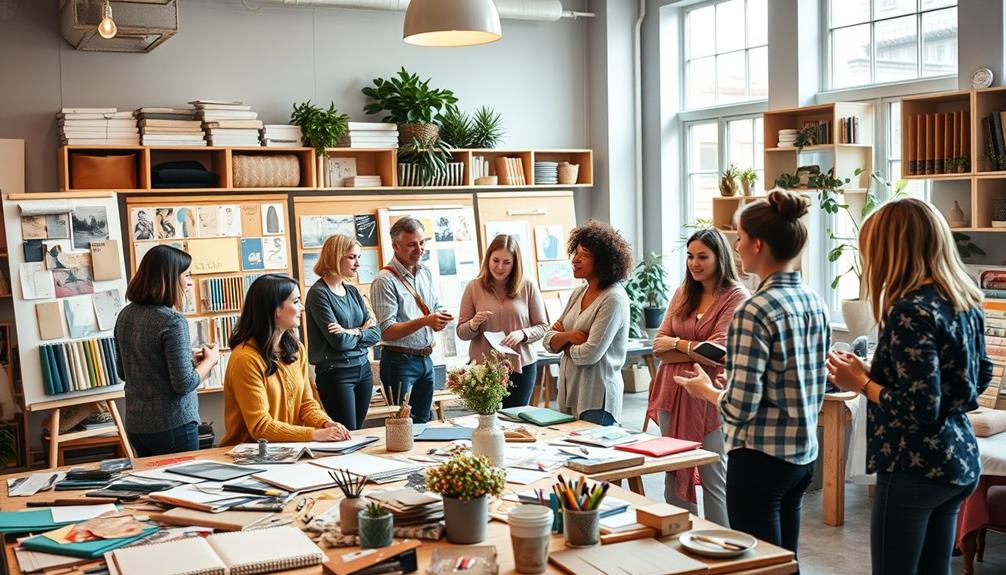
Networking and professional development are essential for boosting your interior design skills and career. Engaging in networking events, like design fairs and industry conferences, opens doors to valuable connections and insights about the latest trends and techniques in interior design.
These gatherings not only provide inspiration but also enable you to meet potential collaborators and clients.
Joining professional organizations, such as the American Society of Interior Designers (ASID), grants you access to significant resources and networking opportunities, enhancing your growth in the field.
Consider participating in mentorship programs, where you can learn directly from experienced designers who can offer guidance and constructive feedback on your skills.
Don't underestimate the power of social media; it's a fantastic platform for connecting with other designers. You can share ideas, inspiration, and industry news, creating a supportive community that fosters professional development.
Conclusion
Improving your interior design skills isn't just about learning; it's about doing. As you embrace key principles and sharpen your design eye, every project becomes a chance to grow. Coincidence happens when you connect with others, share ideas, and stay updated on trends. So, grab those tools and immerse yourself in practical experience. With passion and persistence, you'll find your unique style unfolding, making every space you touch a little more extraordinary. Keep creating, and watch your skills soar!
